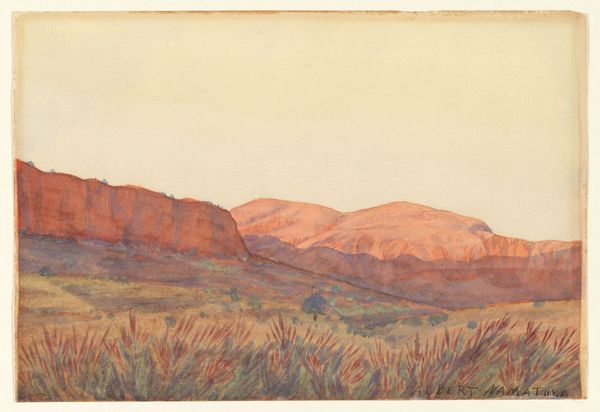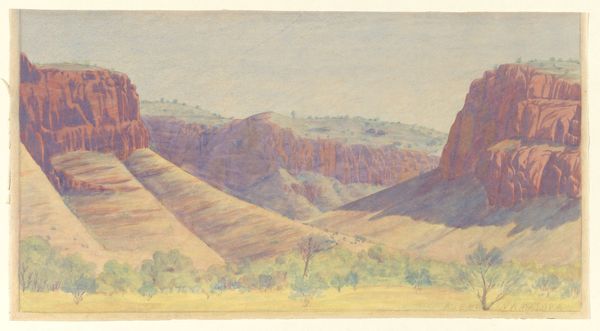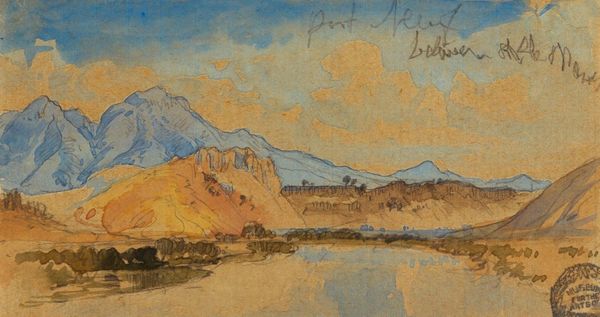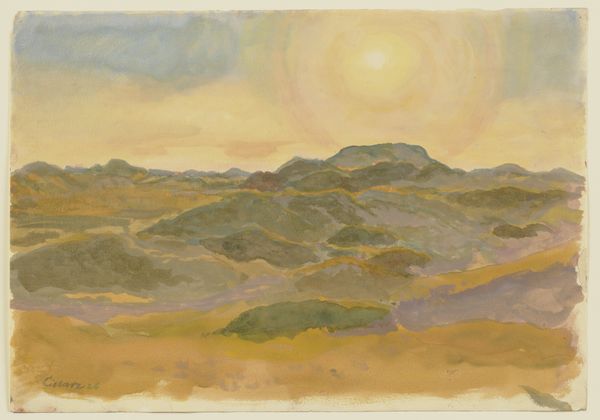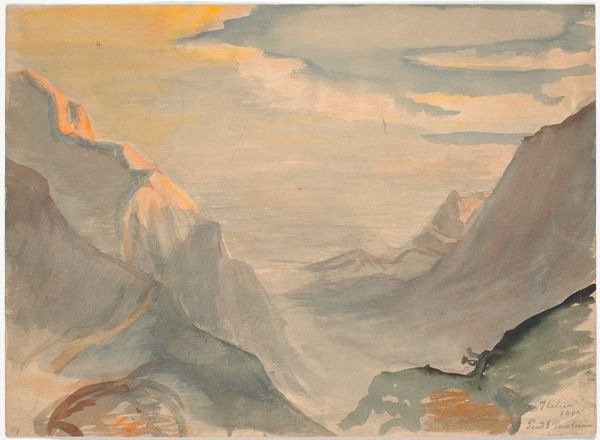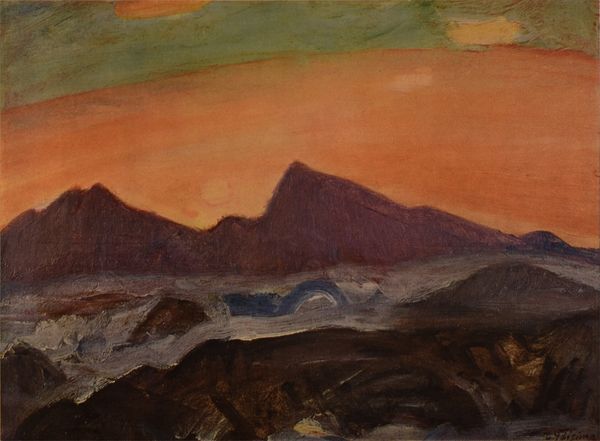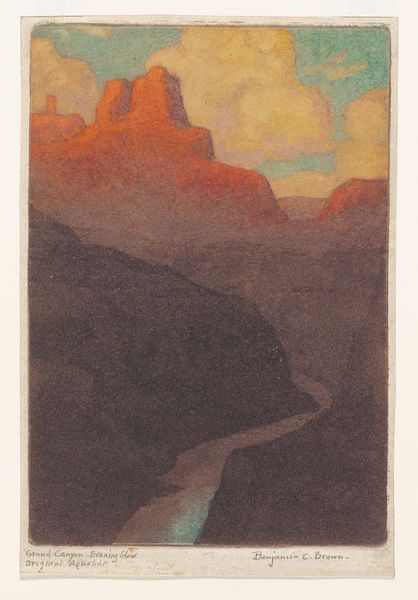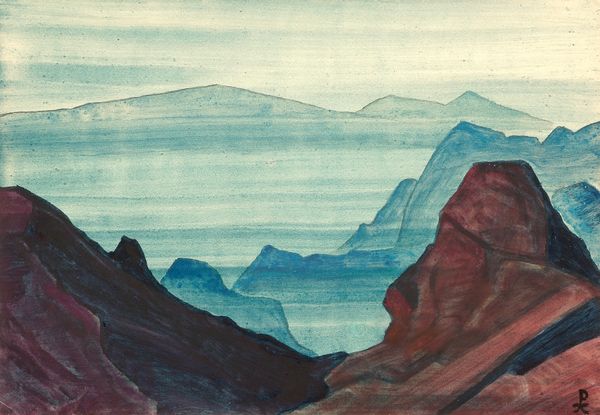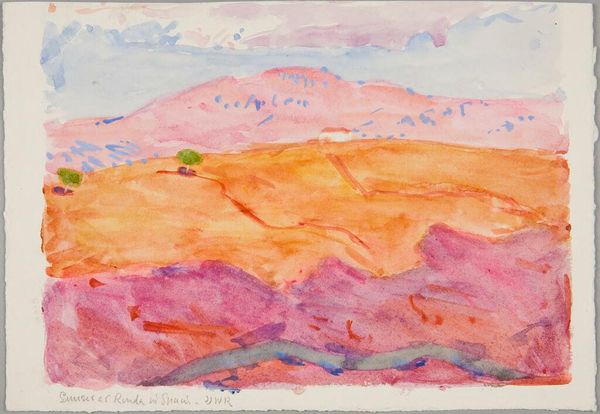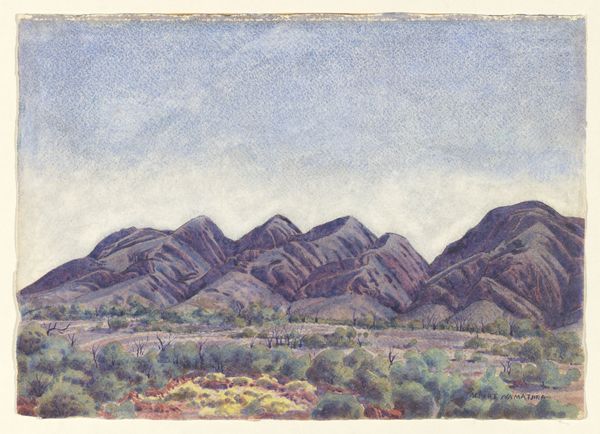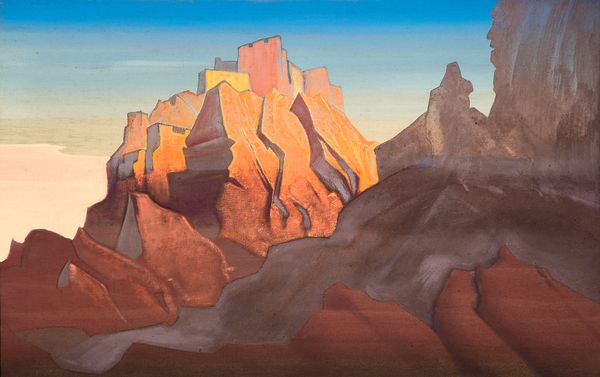
Dimensions: sheet: 51.12 × 76.52 cm (20 1/8 × 30 1/8 in.)
Copyright: National Gallery of Art: CC0 1.0
Curator: Here we have Lucien Whiting Powell's "The Afterglow, Grand Canyon, Arizona," an oil painting dating back to around 1904. Editor: It strikes me immediately with its muted palette – these smoky blues and scorched oranges – a landscape rendered almost like a dream. The application looks quite fluid too, did Powell work en plein air? Curator: He was certainly an advocate of plein air painting and known to have made many paintings en plein air throughout his career, which explains the immediacy in capturing the atmospheric effects. There's a distinct romantic sensibility at play here, not just in the vastness of the subject but also in the subtle emotional resonance Powell coaxes from it. Do you think he succeeds at encapsulating such scale working on a relatively modest panel? Editor: Interesting point. When you look at the scale, there’s a tangible relationship that forms, as the hand of the artist who crafted this feels evident in these brushstrokes, this is material, these are very tangible substances—layered and worked, almost like the sediment in the Canyon itself. This connection to materiality makes this image much more evocative than some grand, oversized canvas. I do wonder about his paint mixtures. Curator: Indeed, the layers are what draw me into his work. These muted hues he employed have many cultural connections. Dusk has symbolized transitional states for centuries and held different symbolism across cultures, perhaps that could explain this selection of colours that creates more subdued emotional state. What do you make of that top-most geological feature and the cloud hovering over it? Editor: A powerful compositional choice. Almost like a beacon drawing our eye deeper into the recessions of the Canyon. Perhaps more interestingly, he doesn't simply recreate the canyon, but captures its felt impact in this carefully applied, raw paint, which reminds the viewer of the power that geologic materials contain within their very formation. I mean just think, the site is layered in human exploitation now... what kind of pigment choices were made at the time for landscape artists such as Powell, who may not have always sourced from the land he was documenting? Curator: It really highlights the layers present both materially and metaphorically within this powerful landscape! Thank you. Editor: An interesting contrast of geological time versus human interventions, wouldn’t you say? Thanks!
Comments
No comments
Be the first to comment and join the conversation on the ultimate creative platform.
